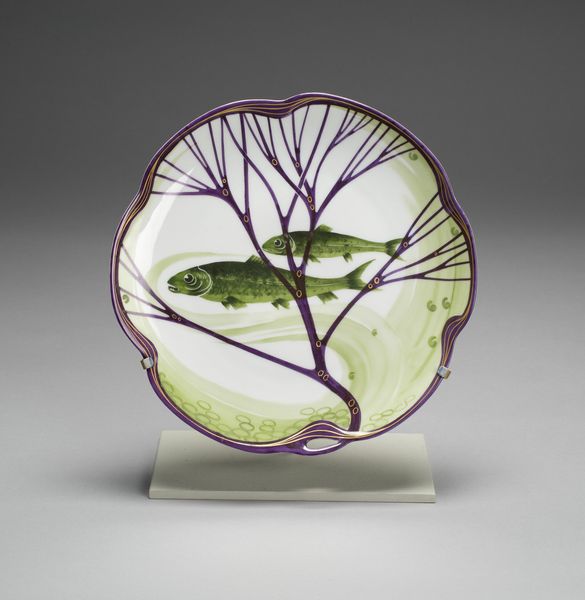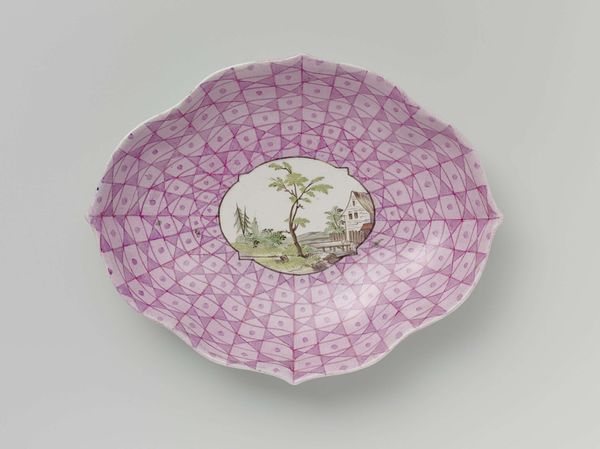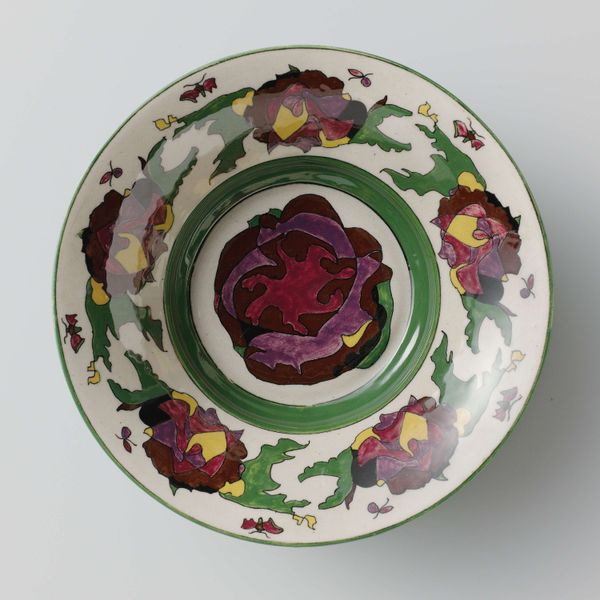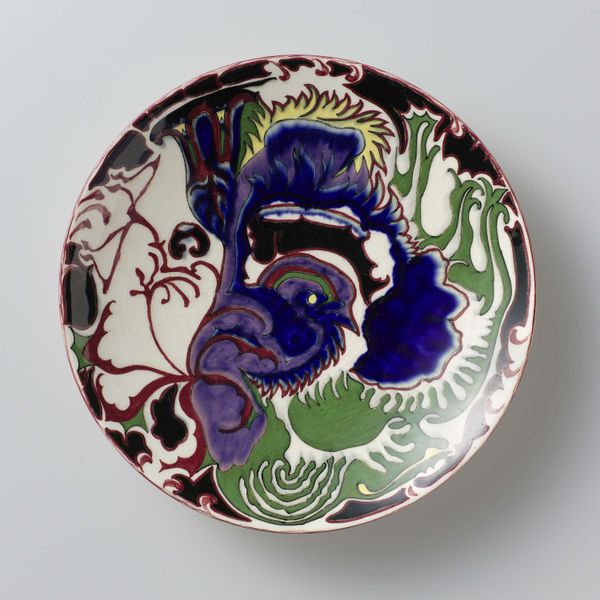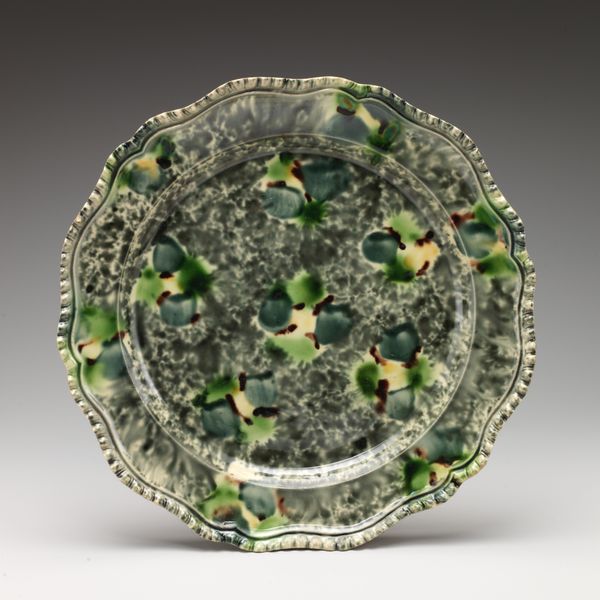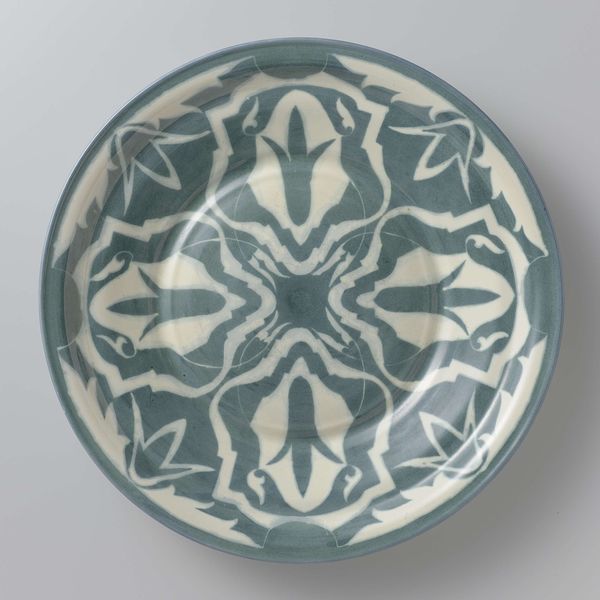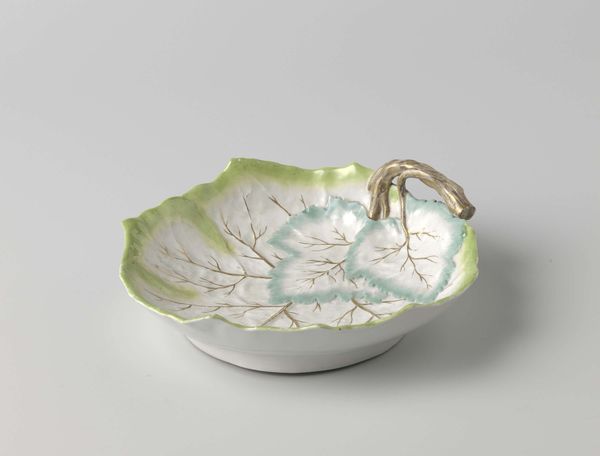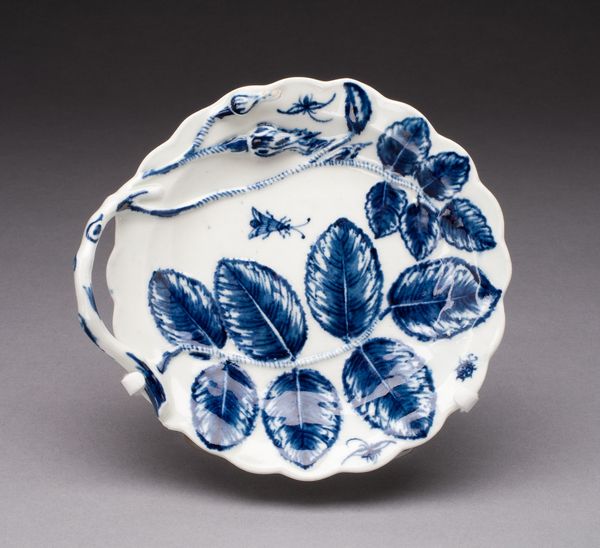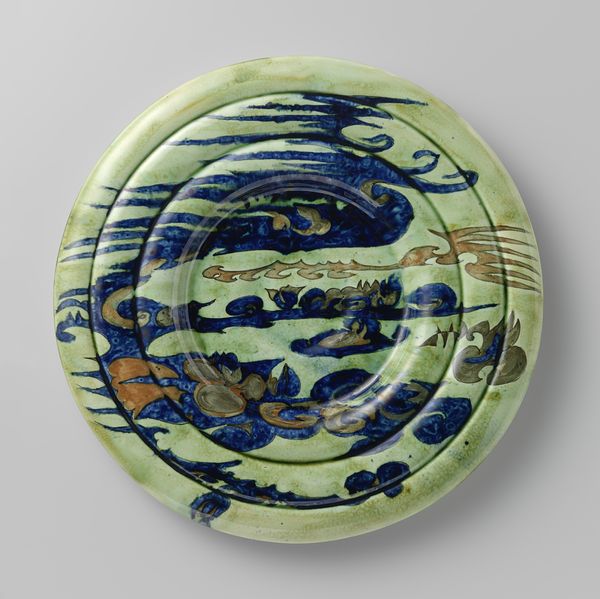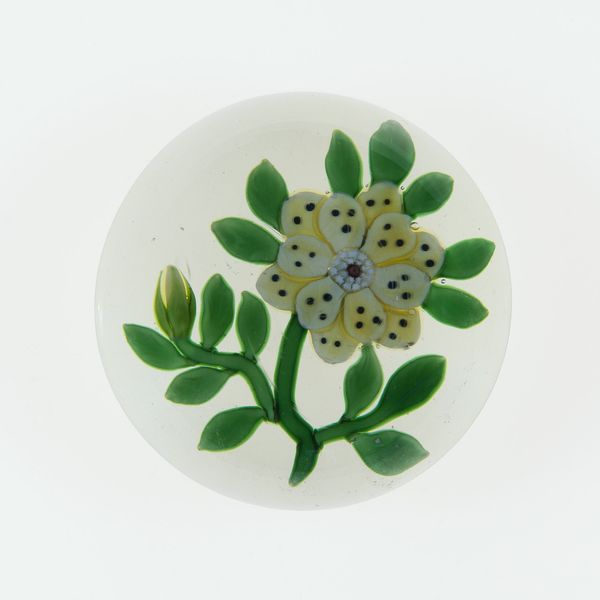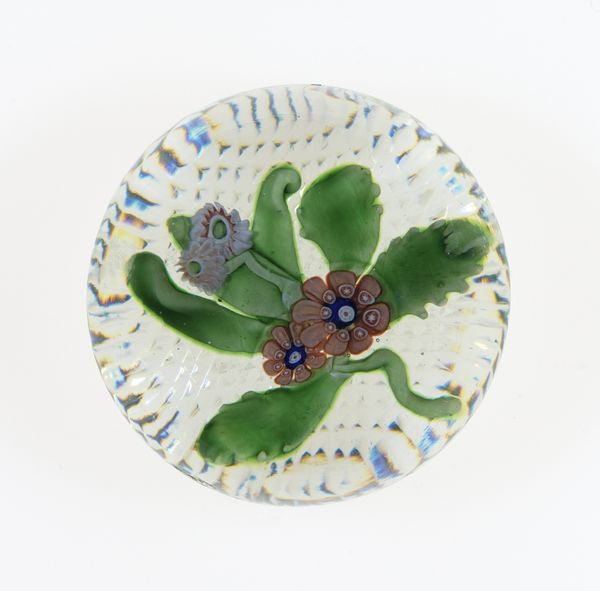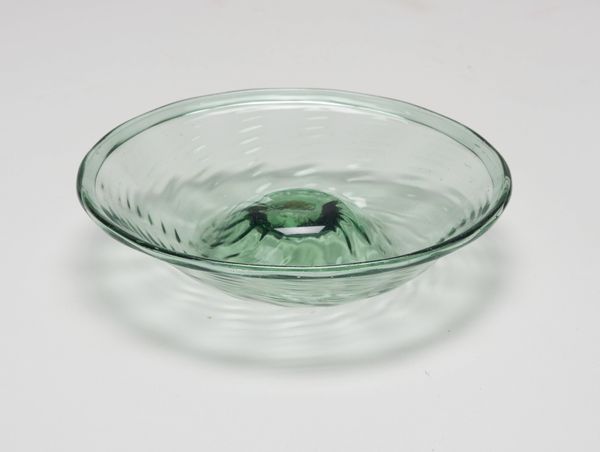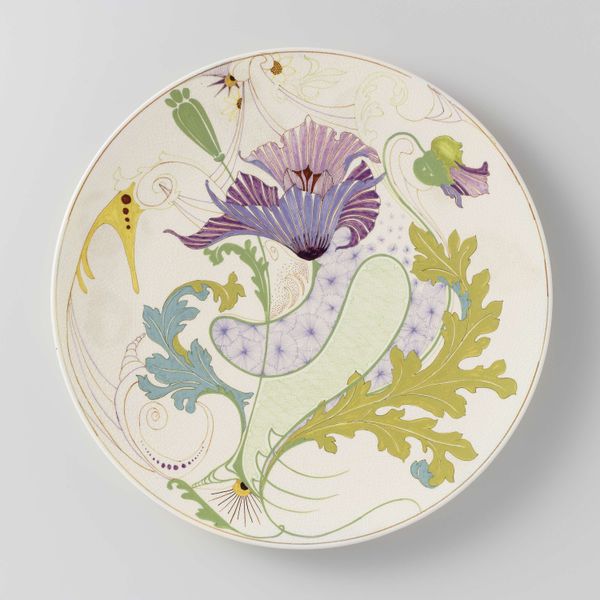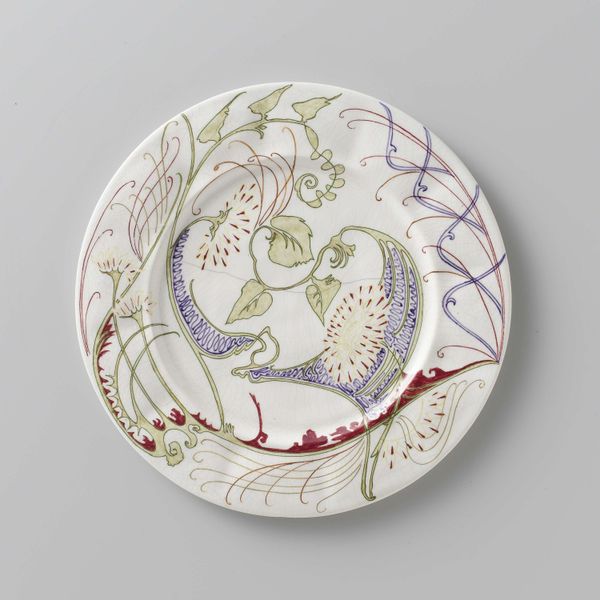
painting, ceramic, porcelain
#
art-nouveau
#
painting
#
ceramic
#
porcelain
#
ceramic
Copyright: Public Domain
Editor: So this is a porcelain service plate from around 1899, created by Hermann Gradl. The 'Fish' design is charming, though slightly eerie, given the lonely fish and bare branches. How do you interpret this work, particularly with its subtle symbolism? Curator: That initial feeling of eeriness is important. Consider the Art Nouveau movement, its preoccupation with nature, but often nature imbued with a sense of transience. What do we traditionally associate with fish imagery? Think biblically, mythologically. Editor: Well, fish can symbolize abundance, faith, or even fertility… but the single fish here feels more isolated than abundant. Curator: Precisely. The single fish, caught on a line, speaks not of bountifulness, but of capture, of fate perhaps. The stark, leafless branches—often interpreted as stylized seaweed— reinforce this sense of sparseness, a kind of visual winter. Gradl uses these naturalistic motifs to explore more existential themes. The image becomes a vessel carrying layered meanings about destiny and fragility. Editor: I never thought a plate could hold such complex ideas! The plate format, intended for serving, adds a dark layer, doesn't it? The fish becomes the served. Curator: Yes, that tension between utility and symbolism is vital here. Does seeing this blend of naturalism and dark symbolism shift your initial impression? Editor: Definitely. Seeing how symbols and functionality collide really changes the way I view the piece. It's much more than just a pretty plate. Curator: It reminds us that even the most functional objects can hold complex stories.
Comments
No comments
Be the first to comment and join the conversation on the ultimate creative platform.
